

GALAXY
Metaverse, by dreamers, for dreamers
How to Claim
| Check URL | https://galaxychain.zone/airdrop |
|---|
Eligibility Criteria:
Delegators: $ATOM, $OSMO
LPs: $ATOM/$OSMO on Osmosis
Cosmos Snapshot 2021-06-18 17:00 UTC
Osmosis Snapshot 2022-01-01 00:00 UTC
Galaxy Airdrop Check your amount
More details on $GLX Airdrop. Source: Galaxy Airdrops
In order to build and keep our metaverse is decentralized, we thought about distributing the genesis airdrop fairly to citizens of metaverse. Therefore, two major factors were considered when distributing genesis airdrop tokens.
1. Abnormal wallet sharing problem to get more airdrop.
2. We found that the polarization of token quantity by wallet is very serious. We adjusted the distribution ratio of GLX tokens by referring to the Gini index, decile dispersion ratio, which indicates the degree of imbalance. (more details about this are described later in the document)
GLX AIRDROPS
Summary
Genesis supply : 1 billion
Max supply : 5.1 billion


We are recruiting validators and running test-net. The airdrop claim schedule is the end of April.
Details
For fair distribution, we adjusted the airdrop amount by dividing the section based on the percentage of balance(Atom, Osmo). This reduces the amount of GLX tokens that the top-level addresses will receive, and distributes the reduced amount to community members and other validators. All community members will play an important role as a citizen of the galaxy metaverse.
We don’t think a fair distribution should be an equal distribution to all addresses.
-Addresses that have below minimum(Min) amount cannot claim GLX airdrop tokens.
-Addresses that have more than the maximum(Max) amount can claim a certain amount of GLX airdrop tokens.

-Addresses with amounts between minimum and maximum can claim airdrop tokens according to the below formula.
- Atom staker
Constant C = 0.13867 (Min ~ bottom 10%)
Constant C = 0.02053 (bottom 10% ~ Max)

- Osmo staker
Constant C = 0.1884

- Atom-Osmo LP bonded
Constant C = 0.3175

POLARIZATION
We calculated the Gini index and Decile dispersion ratio based on the snapshot data. However, if we carefully consider the blockchain economy, the statistics shown below are incomplete and do not fully reflect the token economy of the entire Cosmos ecosystem. (specific income share, distortion, sample difference, etc.)
Gini index
The mini index, or Gini coefficient, measures income distribution across a population. It often serves as a gauge of economic inequality, measuring income distribution or, less commonly, wealth distribution among a population. The coefficient ranges from 0 (or 0%) to 1 (or 100%), with 0 representing perfect equality and 1 representing perfect inequality.
- Because of data and other limitations, the Gini index may overstate income inequality and can obscure important information about income distribution.
- From a national perspective, no country exceeds 0.7
- More details about Gini index
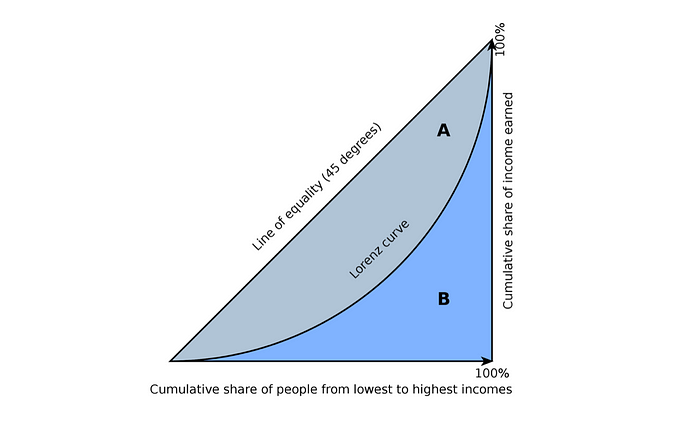
Decile dispersion ratio
The larger the ratio, the smaller the gap.

Cosmos Hub(staked)
-Gini index : 0.94878
-Decile dispersion ratio: 1.6779
If you look at the below table, it is generally evenly distributed by each level. However, considering the number of addresses, very few addresses seem to have many tokens. The variance of the stocking quantity does not necessarily mean decentralization, but we do not think it is a good ratio for Galaxy metaverse. So GLX tokens are going to be distributed over a more addresses.
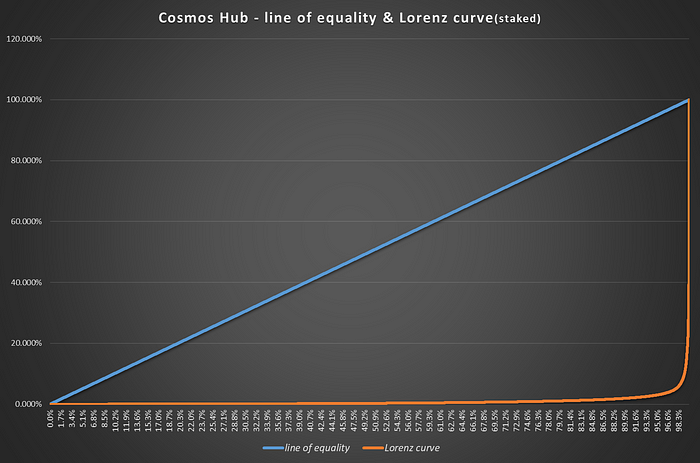

Osmosis(staked)
-Gini index : 0.93889
-Decile dispersion ratio: 1.7901
It shows a slight improvement compared to Cosmos Hub, and the number of addresses distributed in top 50% is relatively high. However, It’s not even a year since Osmosis was launched, These datas are not much significance.
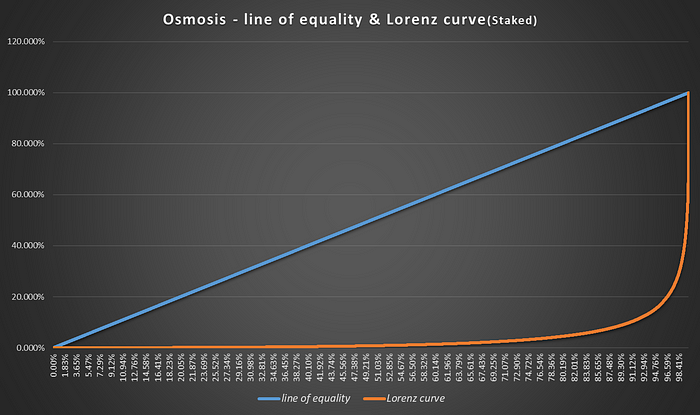
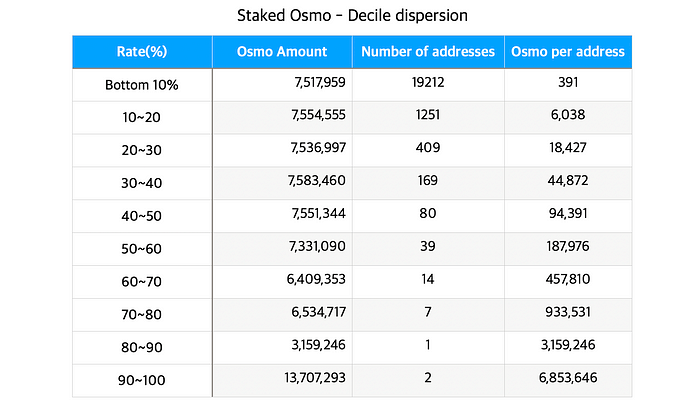
Atom-Osmo LP bonded
-Gini index : 0.94411
-Decile dispersion ratio: 1.9156
Compared to the previous two datas, index and ratio figures are the best. However, this data excludes the address below, which accounts for 50% of the total amount of bonded. If this address is included, the above figures could change to worse.(We are still looking for what this address means.)
osmo1njty28rqtpw6n59sjj4esw76enp4mg6g7cwrhc : 22,090,530 osmo
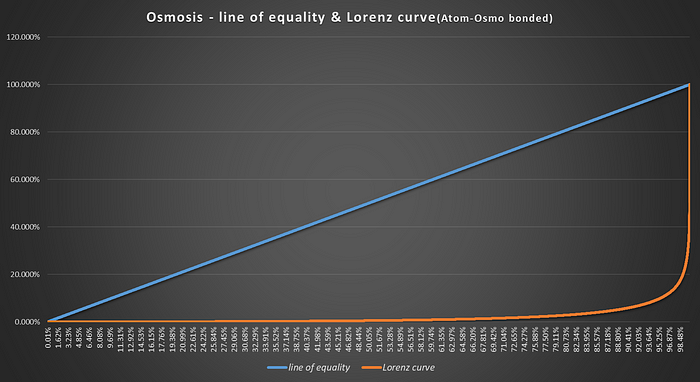
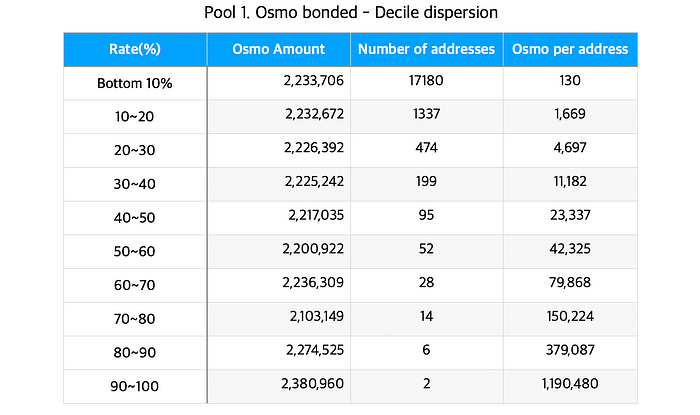
Conclusion : GLX token economy
The genesis airdrop of the GLX token is designed to distribute some of the amounts that top addresses can receive to validators and community members. If this is distributed excessively, the owners of top address will make excessive sacrifices, which is reverse discrimination. We want to make it clear that one of the things we need to know is that they’re consuming different forms of resources and time for the growth of the ecosystem and each protocol. Considering the above, we proceeded with GLX genesis airdrop. The Gini index, decile ratio for GLX token is improved at the genesis distribution stage.

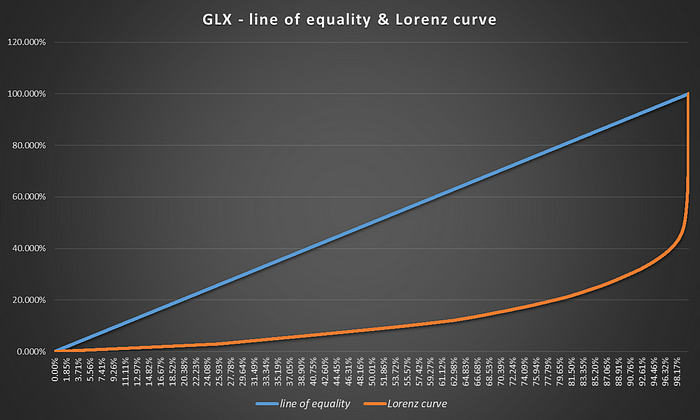
The galaxy metaverse does not require typical utility tokens like a P2E game or NFT marketplace. The GLX will be used as the key currency of the metaverse which we will live in. Over time, genesis airdrops ratio will be decrease to 10% of the maximum supply, the total amount of genesis airdrops may have less impact on the entire network. Therefore, we need to pay constant attention to the token economy. In order to keep our metaverse decentralized and stable, our community needs to discuss and make decisions in governance based on the data generated as the protocol expands.
